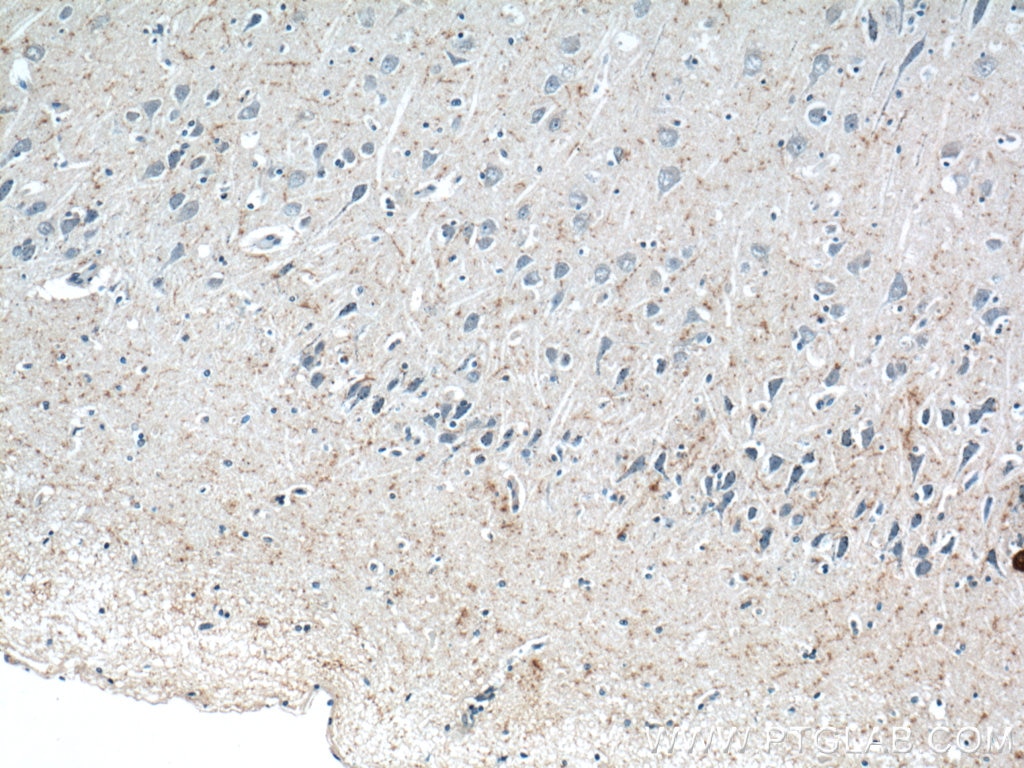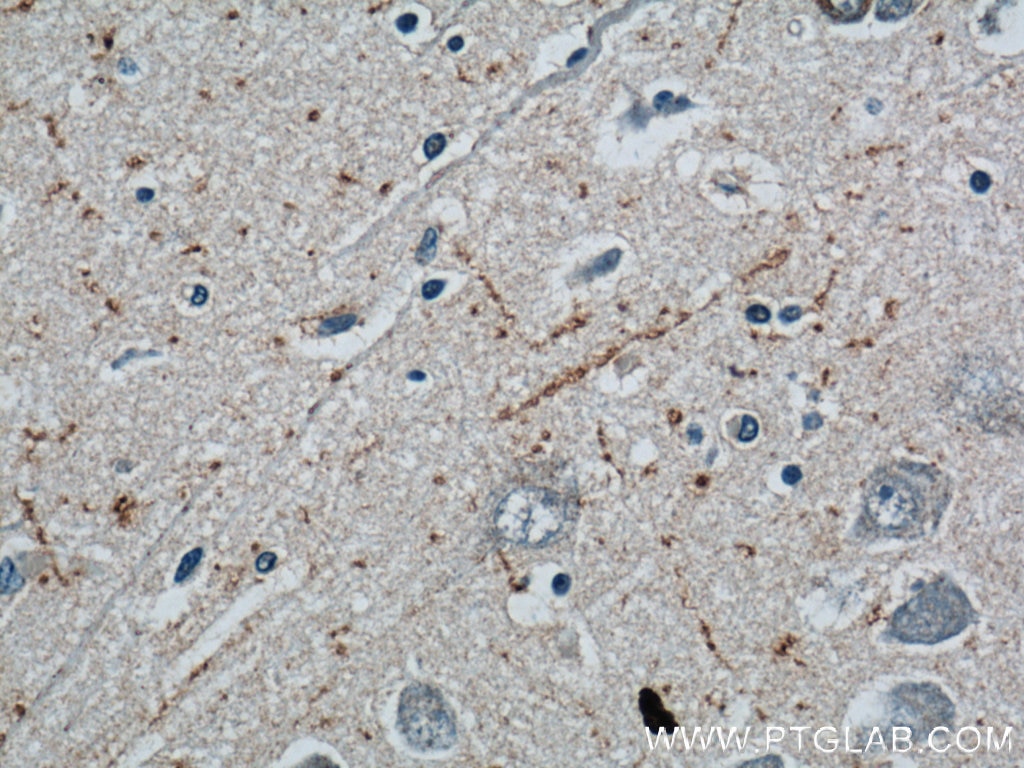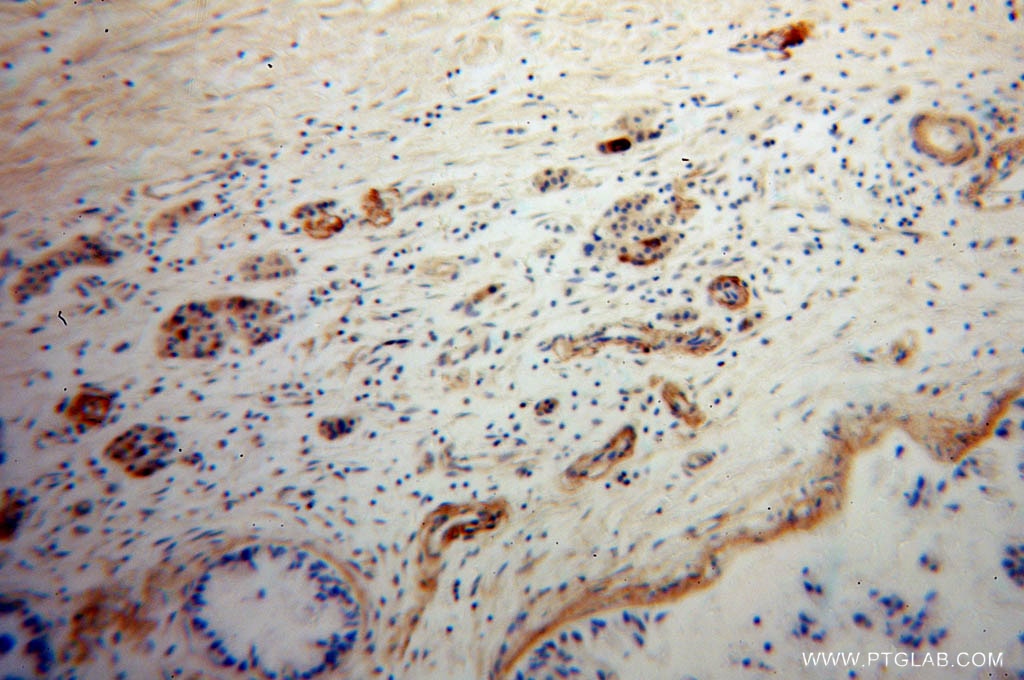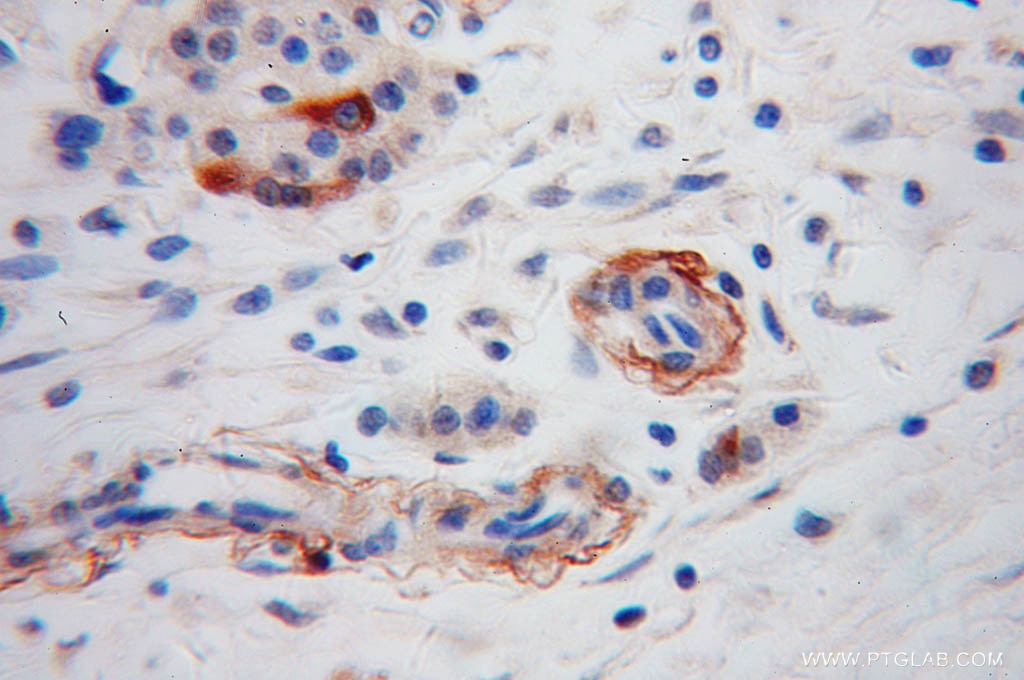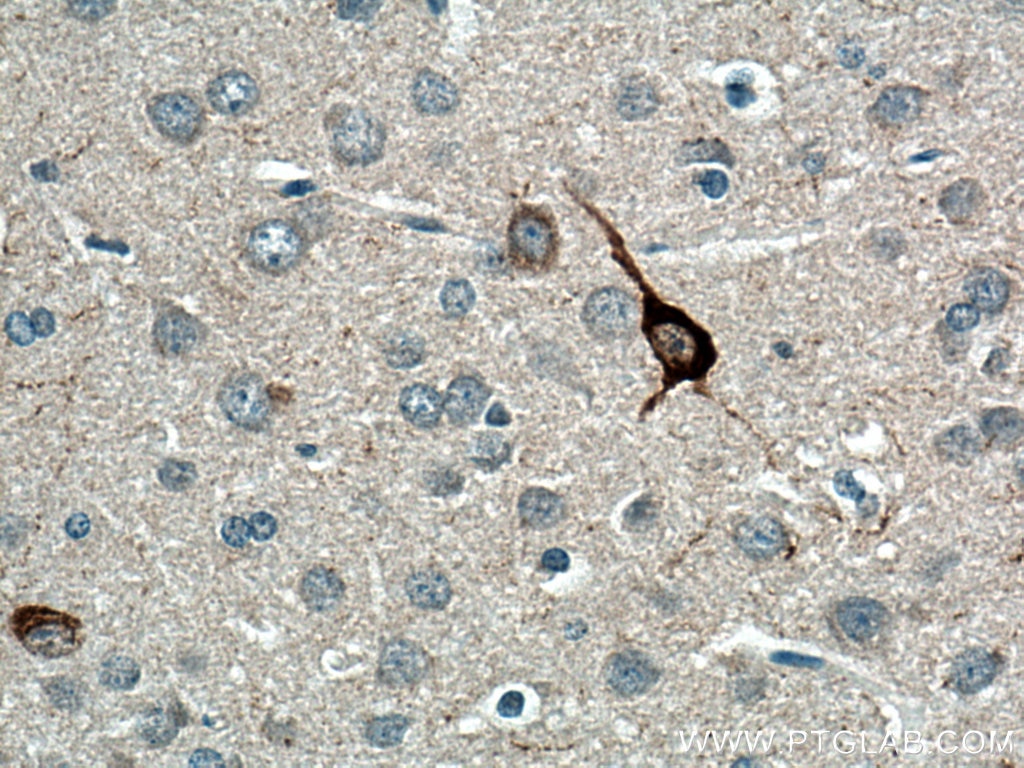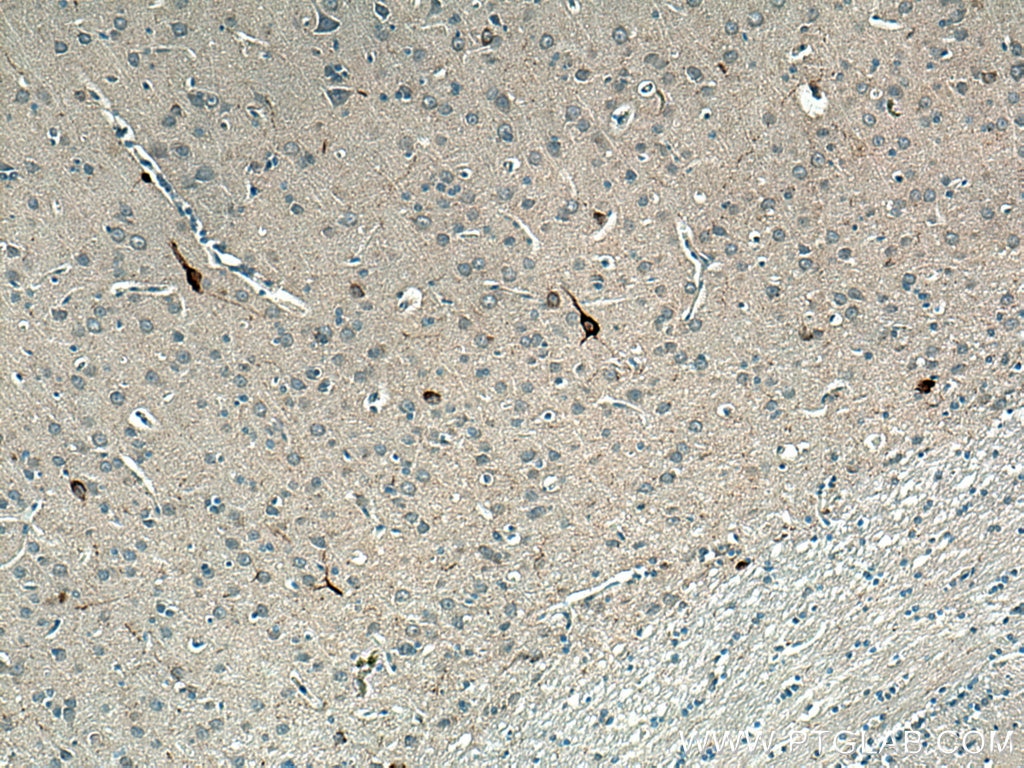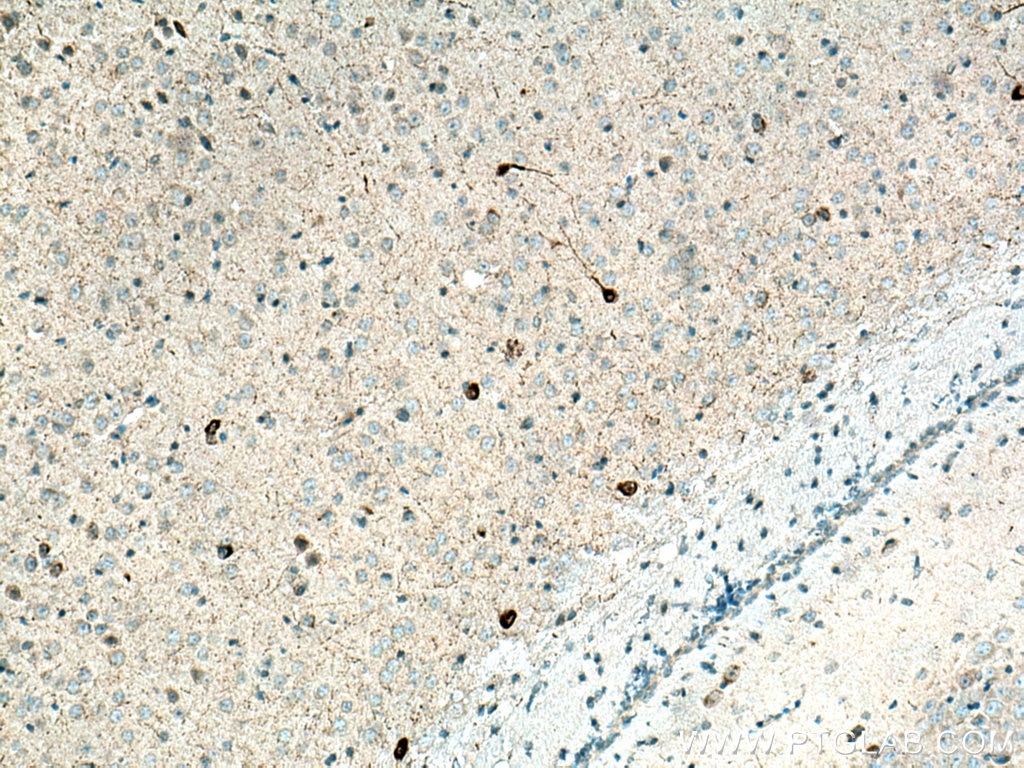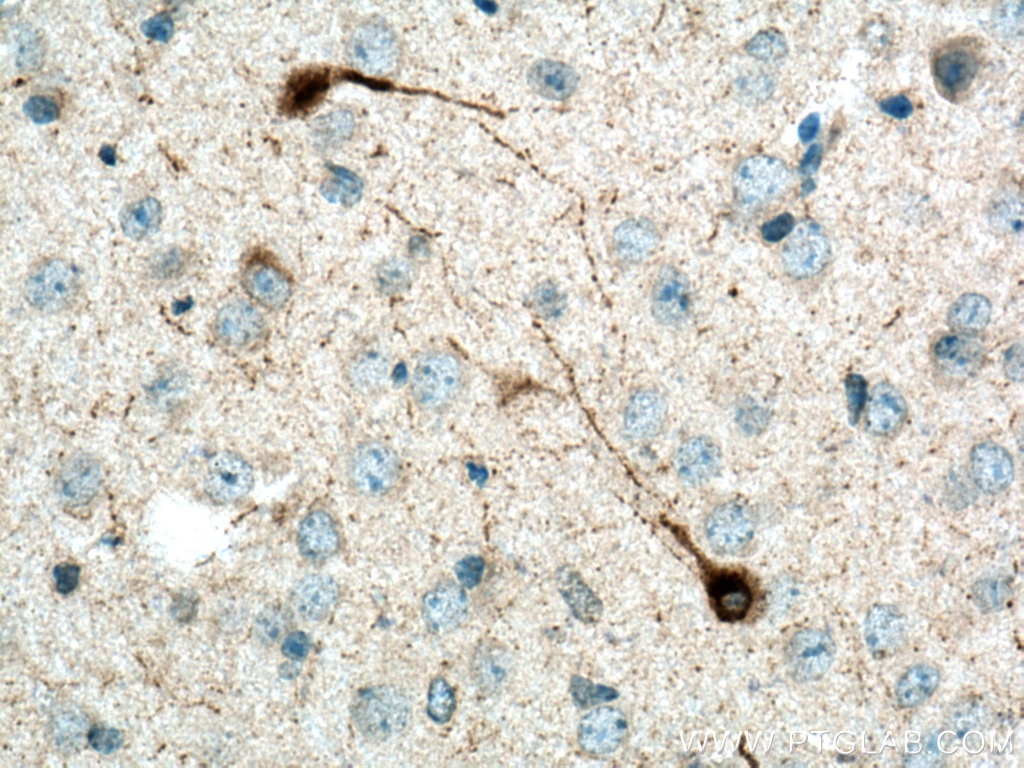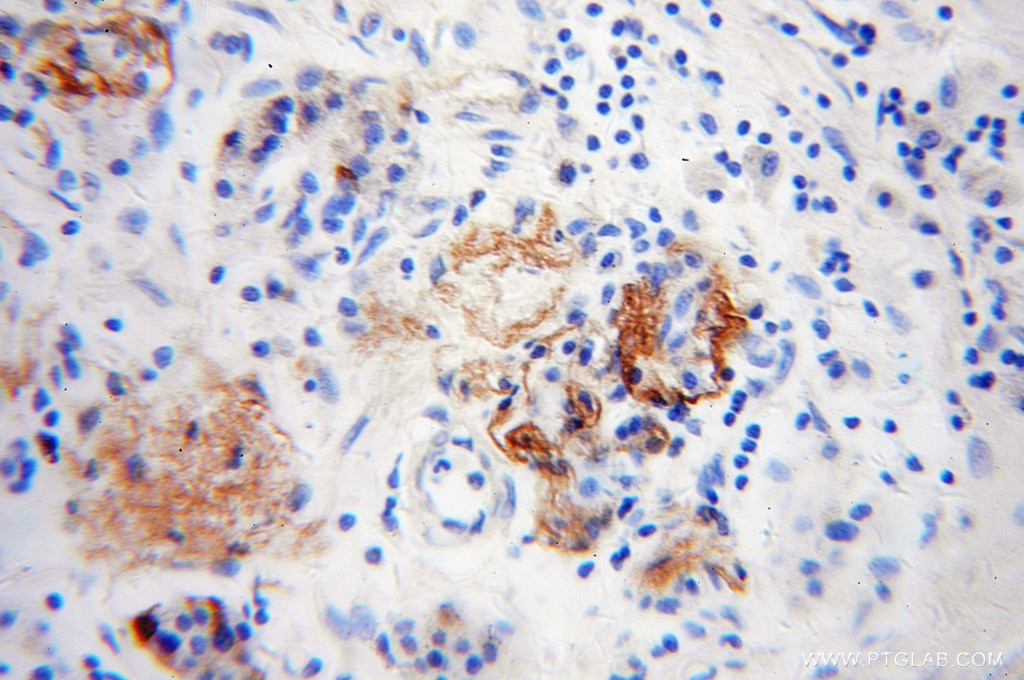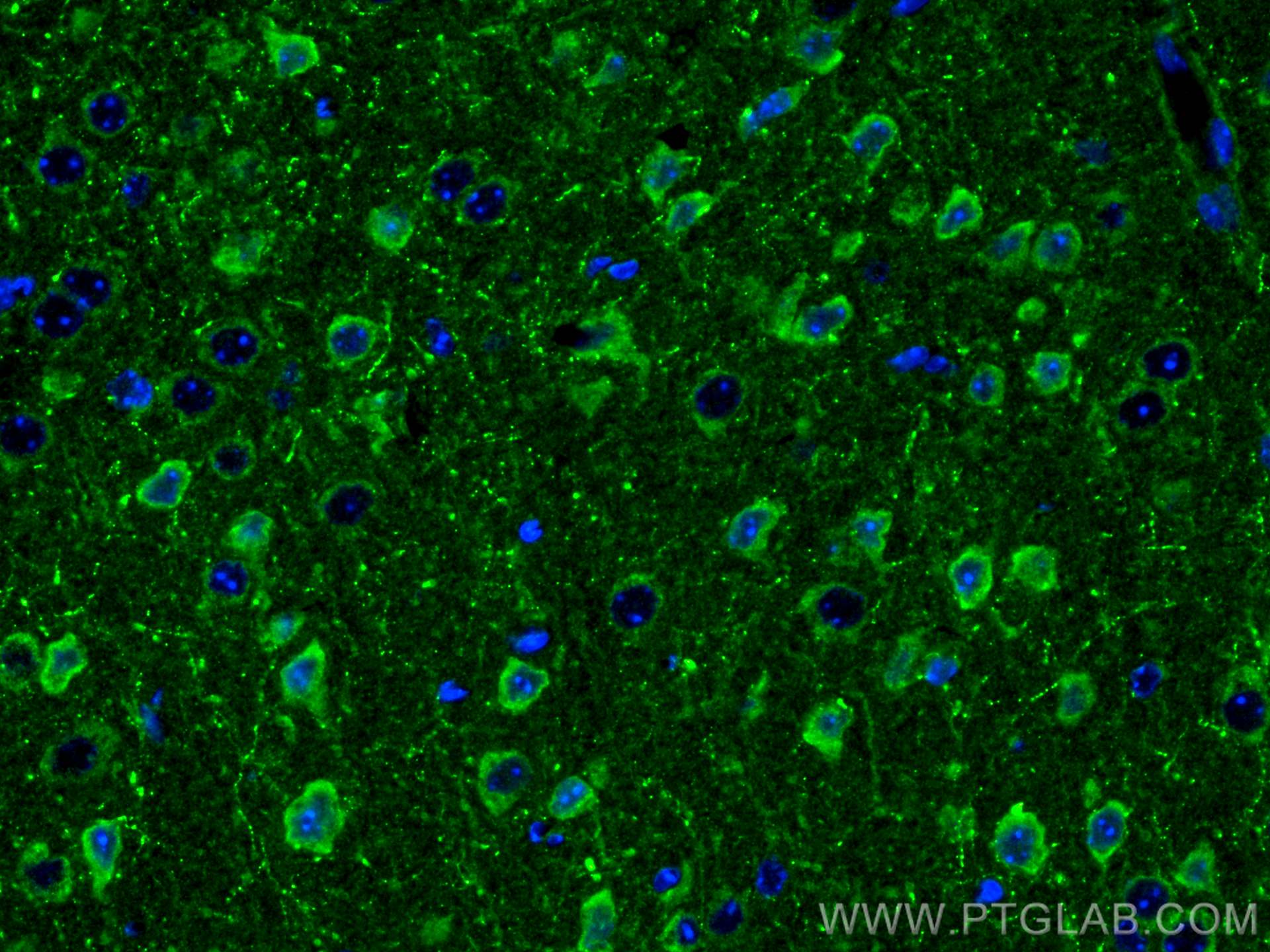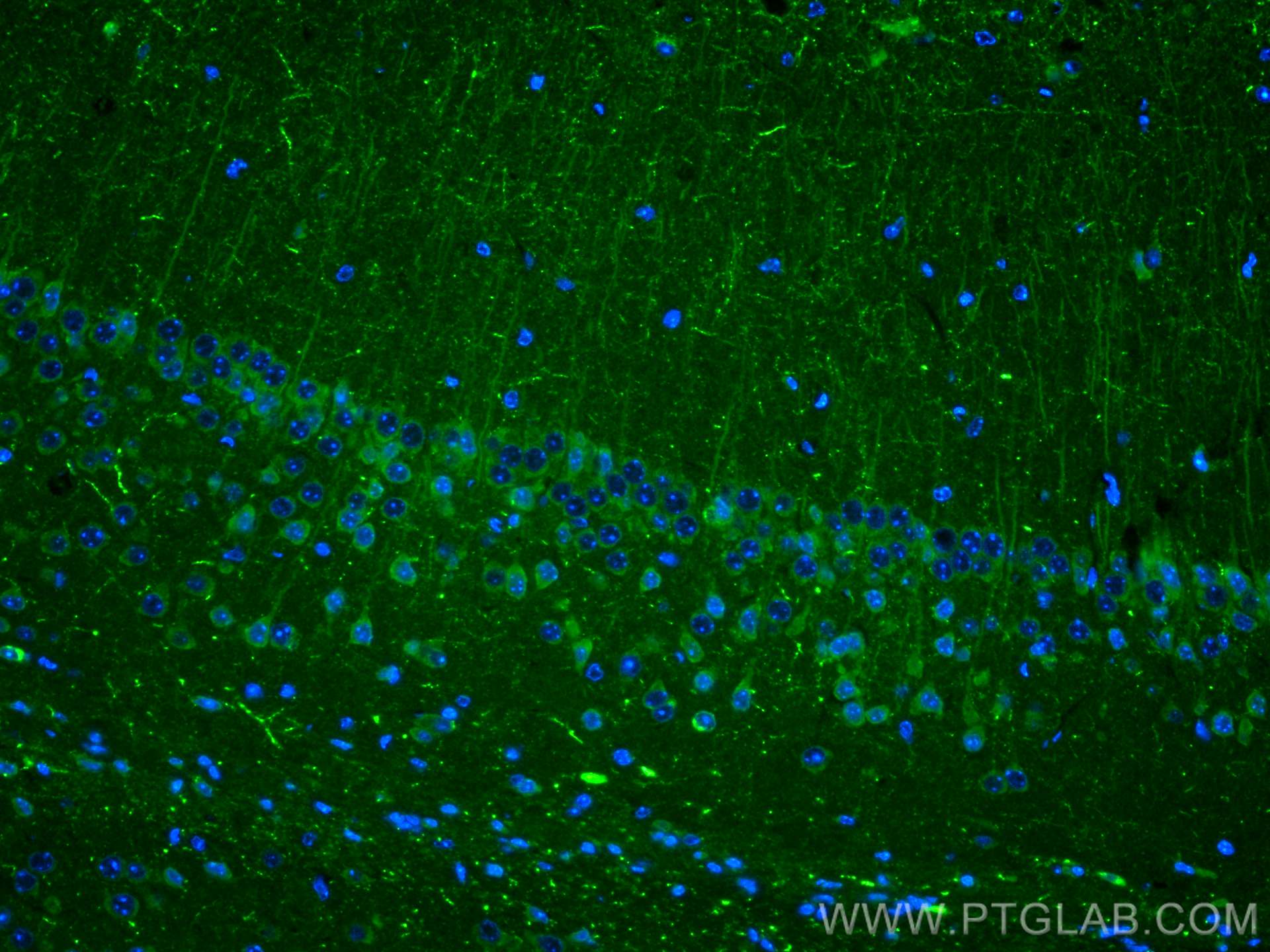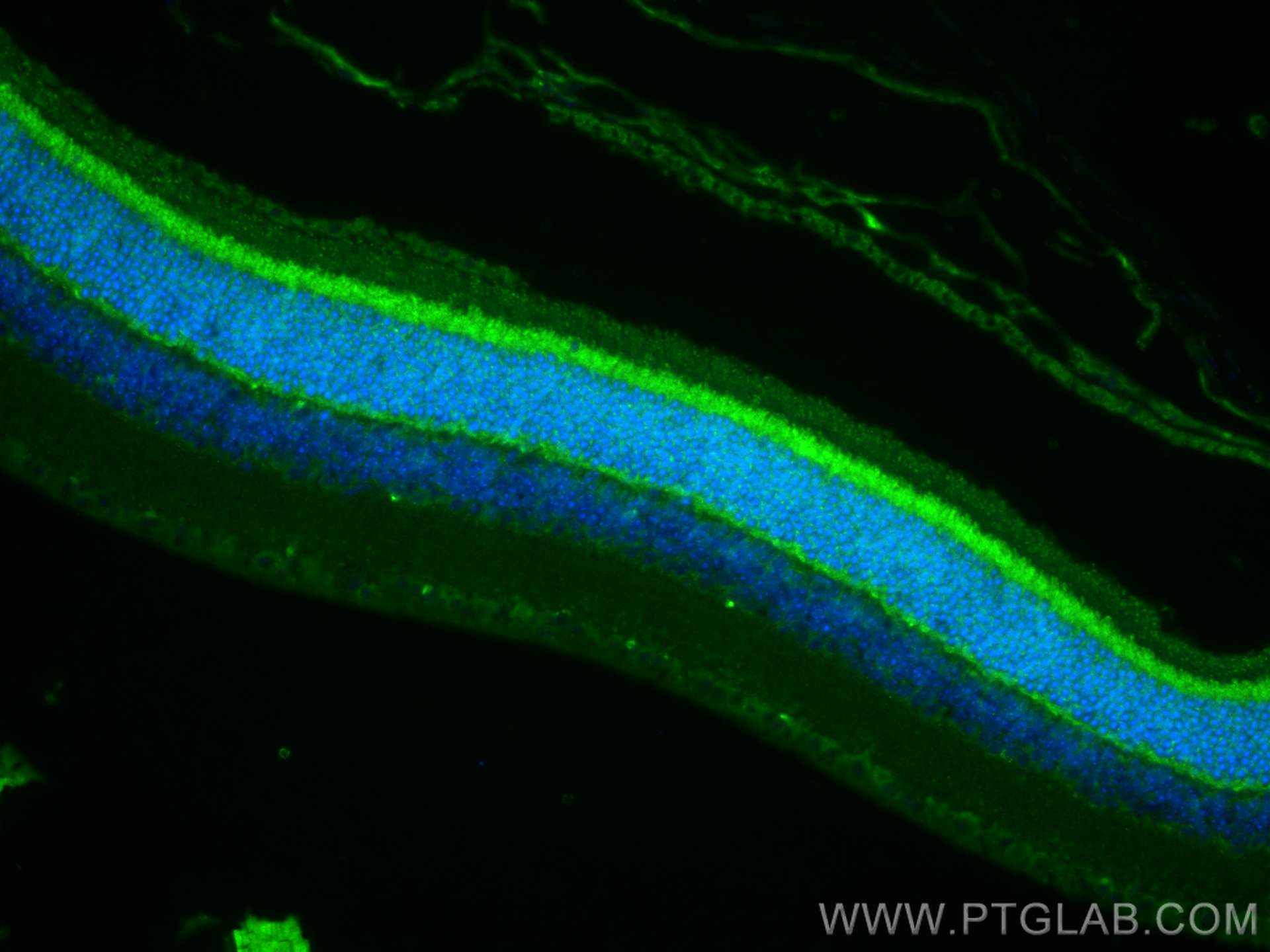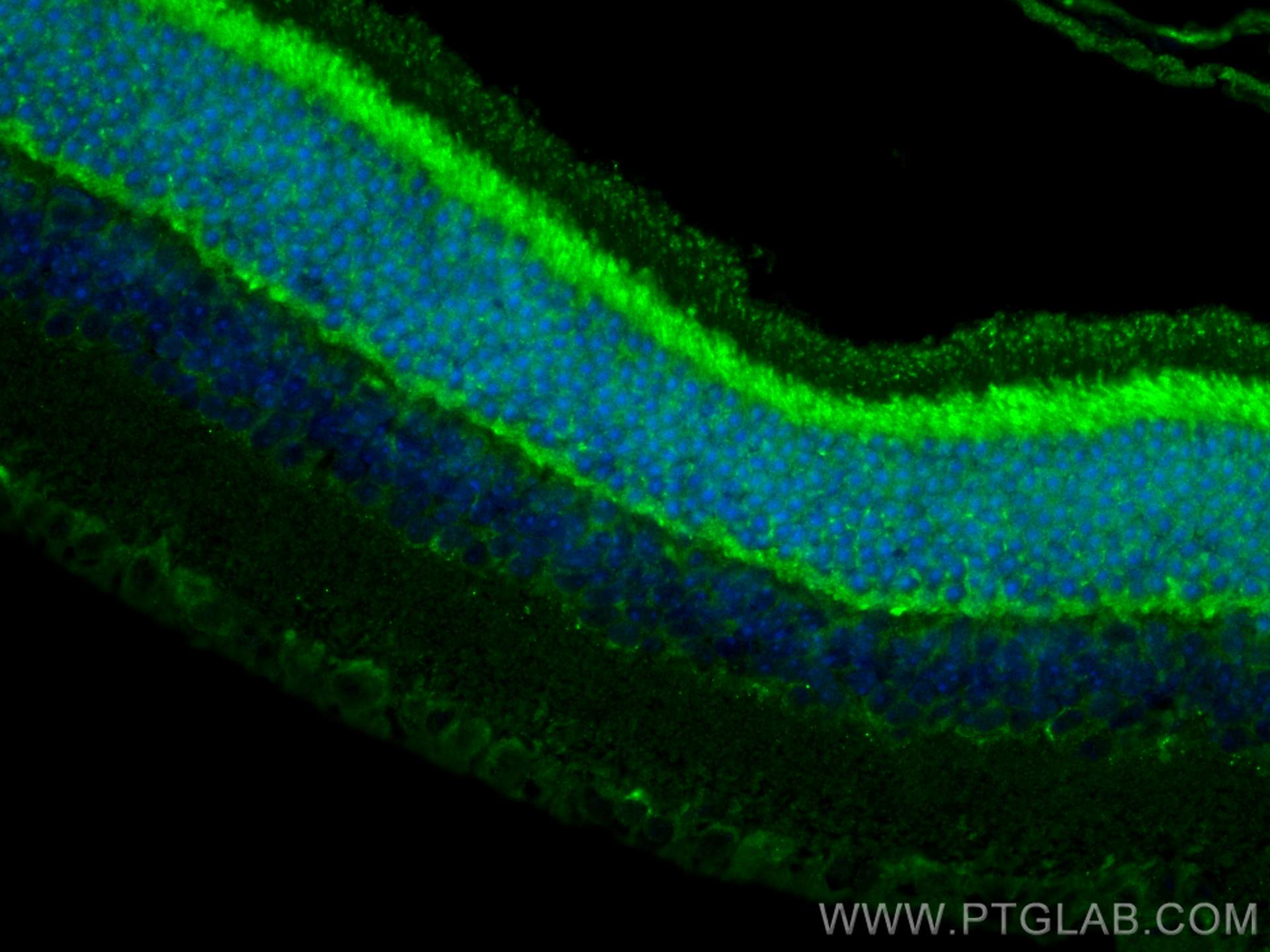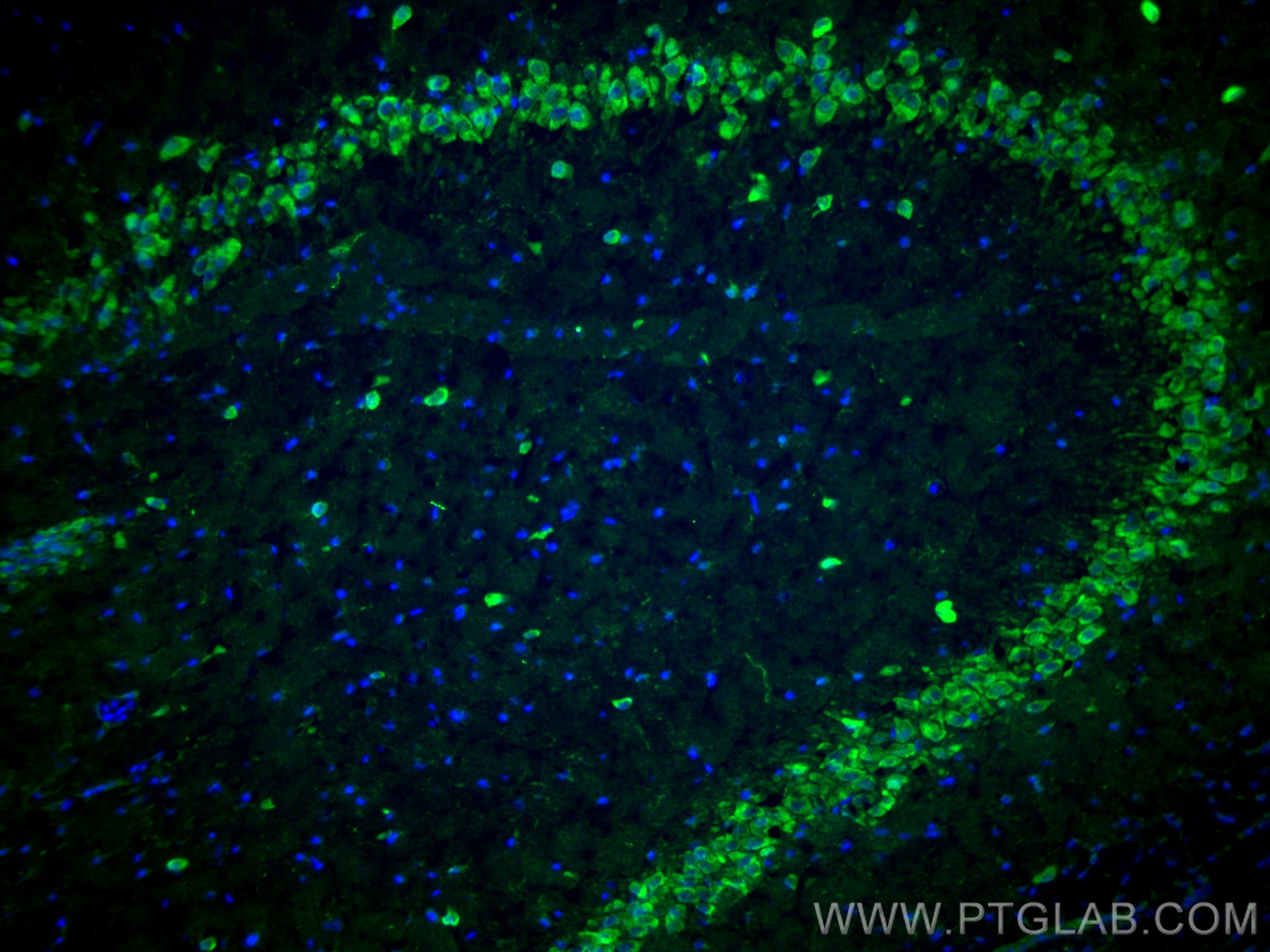Anticorps Polyclonal de lapin anti-Neuropeptide Y
Neuropeptide Y Polyclonal Antibody for IHC, IF-P, IF-Fro, ELISA
Hôte / Isotype
Lapin / IgG
Réactivité testée
Humain, rat, souris
Applications
WB, IHC, IF-P, IF-Fro, ELISA
Conjugaison
Non conjugué
N° de cat : 12833-1-AP
Synonymes
Galerie de données de validation
Applications testées
| Résultats positifs en IHC | tissu cérébral humain, tissu cérébral de rat, tissu cérébral de souris, tissu de cancer du pancréas humain il est suggéré de démasquer l'antigène avec un tampon de TE buffer pH 9.0; (*) À défaut, 'le démasquage de l'antigène peut être 'effectué avec un tampon citrate pH 6,0. |
| Résultats positifs en IF-P | tissu cérébral de souris, tissu oculaire de souris |
| Résultats positifs en IF-Fro | tissu cérébral de rat, |
Dilution recommandée
| Application | Dilution |
|---|---|
| Immunohistochimie (IHC) | IHC : 1:50-1:500 |
| Immunofluorescence (IF)-P | IF-P : 1:50-1:500 |
| Immunofluorescence (IF)-FRO | IF-FRO : 1:50-1:500 |
| It is recommended that this reagent should be titrated in each testing system to obtain optimal results. | |
| Sample-dependent, check data in validation data gallery | |
Applications publiées
| WB | See 4 publications below |
| IHC | See 7 publications below |
| IF | See 4 publications below |
Informations sur le produit
12833-1-AP cible Neuropeptide Y dans les applications de WB, IHC, IF-P, IF-Fro, ELISA et montre une réactivité avec des échantillons Humain, rat, souris
| Réactivité | Humain, rat, souris |
| Réactivité citée | rat, Humain, souris |
| Hôte / Isotype | Lapin / IgG |
| Clonalité | Polyclonal |
| Type | Anticorps |
| Immunogène | Neuropeptide Y Protéine recombinante Ag3568 |
| Nom complet | neuropeptide Y |
| Masse moléculaire calculée | 97 aa, 11 kDa |
| Numéro d’acquisition GenBank | BC029497 |
| Symbole du gène | Neuropeptide Y |
| Identification du gène (NCBI) | 4852 |
| Conjugaison | Non conjugué |
| Forme | Liquide |
| Méthode de purification | Purification par affinité contre l'antigène |
| Tampon de stockage | PBS with 0.02% sodium azide and 50% glycerol |
| Conditions de stockage | Stocker à -20°C. Stable pendant un an après l'expédition. L'aliquotage n'est pas nécessaire pour le stockage à -20oC Les 20ul contiennent 0,1% de BSA. |
Informations générales
Neuropeptide Y (NPY) is one of the most abundant peptides in the mammalian central nervous system (CNS). NPY has been linked to several physiological and pathological functions, such as feeding behaviour, memory processing, pain, anxiety, cell proliferation and many other processes in the central and peripheral nervous systems. The neuropeptide functions through G protein-coupled receptors to inhibit adenylyl cyclase, activate mitogen-activated protein kinase (MAPK), regulate intracellular calcium levels, and activate potassium channels. In addition, NPY was suggested as a potential neuroprotective agent in Alzheimer's disease by counteracting the toxic effect of β-amyloid in an in vitro model.
Protocole
| Product Specific Protocols | |
|---|---|
| IHC protocol for Neuropeptide Y antibody 12833-1-AP | Download protocol |
| IF protocol for Neuropeptide Y antibody 12833-1-AP | Download protocol |
| Standard Protocols | |
|---|---|
| Click here to view our Standard Protocols |
Publications
| Species | Application | Title |
|---|---|---|
Nat Aging Single-cell and spatial RNA sequencing identify divergent microenvironments and progression signatures in early- versus late-onset prostate cancer | ||
ACS Appl Mater Interfaces Lithium-Doped Titanium Dioxide-Based Multilayer Hierarchical Structure for Accelerating Nerve-Induced Bone Regeneration | ||
Free Radic Biol Med Inhibition of neuronal nitric oxide synthase protects against hippocampal neuronal injuries by increasing neuropeptide Y expression in temporal lobe epilepsy mice. | ||
J Orthop Translat Suprascapular nerve injury affects rotator cuff healing: A paired controlled study in a rat model. | ||
Front Behav Neurosci Heterogeneous GAD65 Expression in Subtypes of GABAergic Neurons Across Layers of the Cerebral Cortex and Hippocampus. | ||
Acta Neurobiol Exp (Wars) Aberrant changes of somatostatin and neuropeptide Y in brain of a genetic rat model for epilepsy: tremor rat. |
Avis
The reviews below have been submitted by verified Proteintech customers who received an incentive for providing their feedback.
FH Reyes (Verified Customer) (04-12-2024) | NPY (green) worked nicely marking a subpopulation of interneurons in human brain FFPE cortex tissue.
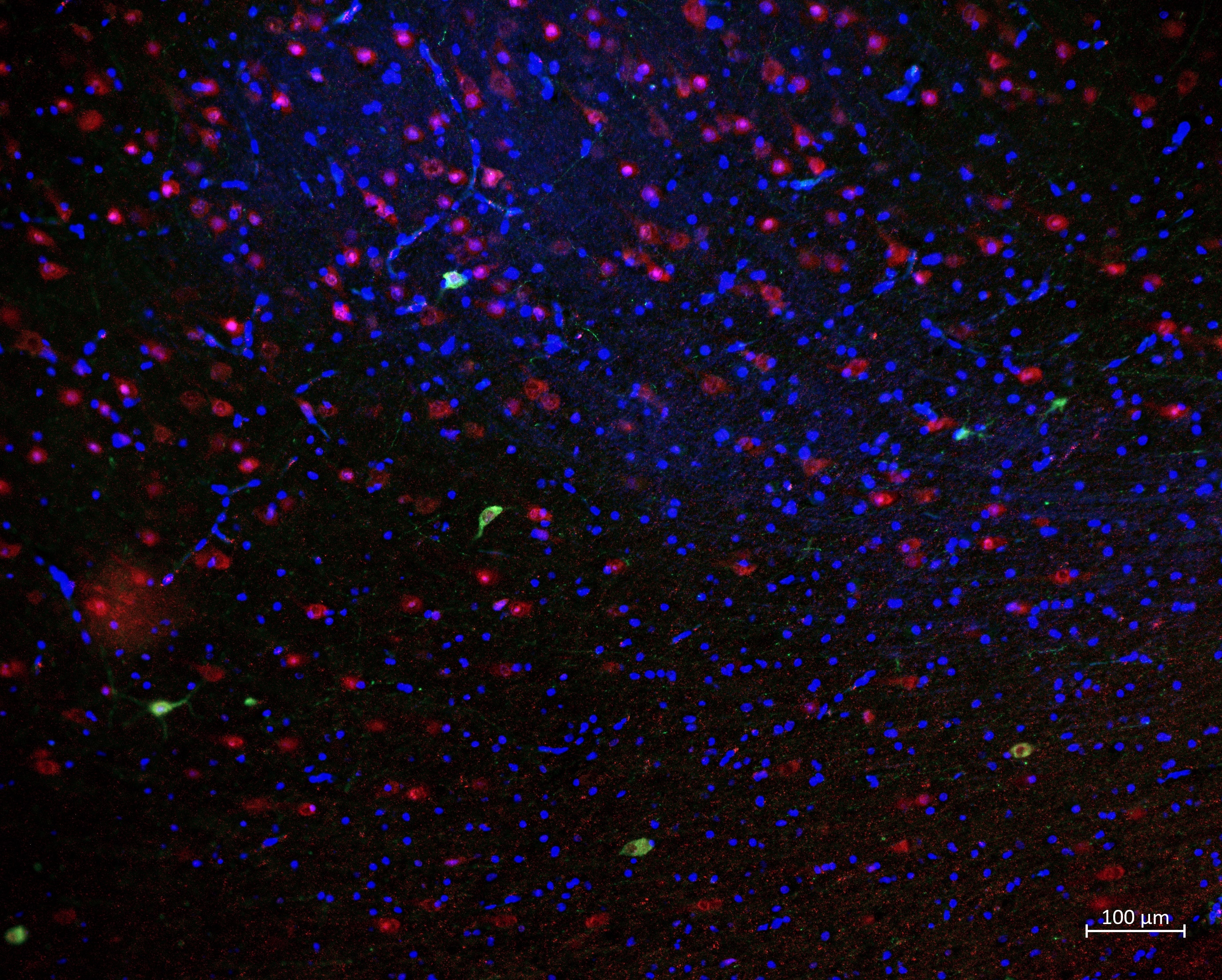 |
